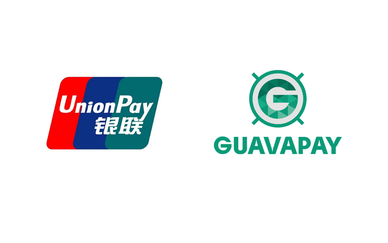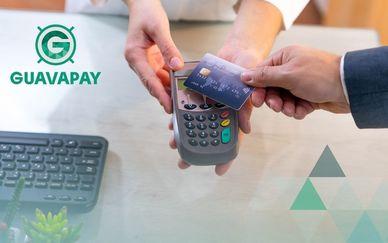Digital businesses have witnessed a large number of new customers due to COVID-19, which has forced most consumers to opt for digital payments. With social distancing becoming the new norm in times of COVID-19, consumers have no option apart from spur on digital shopping methods, and with people addressing more digital payments, fraud and security become the most vulnerable issues. In other words, the rapid shift to digital payments is urgently increasing the need for payment providers and financial institutions to modernize their payment security systems.
Accenture, in its report named “Playing the Long Game in Payments Modernization” (2020), forecasts nearly 420 billion transactions worth US$7 trillion is expected to shift from cash to cards and digital payments by 2023 – and increase to US$48 trillion by 2030. Such a drastic move to digital payments has created an additional workload relating to security and most financial institutions are obliged to introduce new payments security tools and solutions to guarantee safe and seamless digital payments.
A report by MerchantSavvy Payment Fraud Statistics, Trends & Forecasts (2020) states that the companies with set fraud prevention programs have their expenses on fraud attack reduced by 42% and their remedy expenses by 17% compared to companies without these measures.
E-commerce sites and online retailers are facing an overwhelming workload of transactions, unusual activity, and dealing with fraud signals. Significantly, security innovations and solutions are created with customers in mind. It’s better to predict and prevent fraud than to clear up its consequences, isn’t it?
GUAVAPAY uses a sophisticated real-time fraud monitoring infrastructure to generate anti-fraud models in issuing and acquiring transactions that help reduce decline rates and improve dispute and chargeback management.
In light of the above, GUAVAPAY has developed tailored fraud monitoring tools which comprise of the following:
Comprehensive Fraud prevention structure - Easily detect payment fraud online, in-store and in-app.
Fraud Mitigation Risk - Built-in payment security software identifies and prevents fraudulent transactions and false declines.
Optimization of acceptance rates and conversion growth - Real-time fraud detection improves payment processing and thus, enhanced customer experience is achieved.
Detailed reporting and analytics - Standard data reporting, the support of white and blacklists - all prevent repeating fraud attempts and give opportunities for informed decision-making.
Thus, there are basic security solutions to minimize vulnerabilities and maintain a secure environment for the processing of your customers' payments. Let’s take a detailed look at the basic security features that Guavapay has implemented to guarantee frictionless payment transactions.
PCI-COMPLIANCE
PCI DSS (The Payment Card Industry Data Security Standard)
is a set of information security standards for organizations that work with branded
credit cards from major card schemes such as Visa, Mastercard, JCB. PCI-DSS,
which is designed to keep your customers’ payment details safe and protect
credit card data provided by the cardholders and transmitted through card
processing transactions
PCI mandates following high-level requirements to stay
PCI-compliant and safe.
For example, GUAVAPAY is a PCI DSS compliant company,
follows PCI PIN Security and PCI 3DS requirements, and undergoes the necessary
audits annually. Asa result, customers can rest assured that Guavapay implies
the multilevel security layers which significantly minimizes the chance of
fraud and money laundering.
3D SECURE V2
GUAVAPAY implements one of the most significant fraud prevention solutions - 3D Secure V2.
3D Secure V2 is a security protocol that provides an extra layer of protection for online credit and debit card purchases and it ensures cardholder authentication and protection against fraudulent transactions.
The name comes from ‘Three Domain Secure’, which is a messaging protocol that involves three domains, such as a bank, technology that processes the transaction, and the issuing bank.
The system usually requests tokens or biometrics to authenticate cardholder information, which can decrease the number of fraudulent attempts. Moreover, the liability on every transaction that is successfully verified is shifted from a merchant to the issuing bank.
3DS2 prompts compliance with SCA regulations that stipulate two-factor authentication as a requirement for all electronic payments which enables more effective prevention of fraud transactions.
Strong customer authentication (SCA) is a requirement of the EU Revised Directive on Payment Services (PSD2) on payment service providers within the European Economic Area. The requirement ensures that electronic payments are performed with multi-factor authentication, to increase the security of electronic payments.
To put it simply, SCA must consist of two from the following three requirements:
- Something you have (biometrics/ fingerprints)
- Something you own (your own personal device)
- Something you know (PIN code/password)
Moreover, to keep up with the changing market that promotes CNP-transactions 3DS2 makes the experience more secure and user-friendly. First, 3DS2 facilitates the data exchange between merchants, cardholders, and issuers to achieve more accurate authentication. Due to this CNP fraud can be easily prevented.
Another benefit of using 3DS2 is its “frictionless flow” as merchants can use customers’ issuing bank information instead of the customers’ so there is no need for customers to remember a PIN or get redirected to a new webpage. Of course, it also contributes to a shortened and convenient authentication process.
TWO-FACTOR AUTHENTICATION
Two-factor authentication (2FA), often called dual-factor authentication or two-step verification gives a more sophisticated level of protection by adding an extra layer of security to your online platforms.
Instead of simply inputting your username and password, a two-factor authentication process requires additional information, such as a fingerprint, security questions, SMS messages, OTPs, push notifications, and an answer to a code that’s been sent to you.
TOKENIZATION
Tokenization is the process of replacing sensitive data with other data known as a token. The process is highly important since it safeguards the customer's information and prevents theft from the card.
Tokenization Service allows you to perform safe payments. The service does not transfer the buyer's bank card number to the seller. Instead, a token is assigned to the card - a randomly generated value that will be used to complete transactions. In this environment, the customer confirms his identity by adding a card to the mobile application, and created security tokens are stored in the client’s mobile device, this, in turn, improves transaction security for both the seller and the client. Tokens safely pass through the network without the need to expose the card details such as card numbers.
Some of the benefits of tokenization are as follows:
- Compliance - Data tokenization is a perfect tool to keep you in compliance with PCI DSS and keep data safe.
- Reduced risk - If you store card data information there is always a minimal risk to be exposed to a breach. Tokenization will minimize the risk by securing your data.
- Added security from mobile wallets - With the acceleration of mobile wallets the extra layer of security is provided utilizing tokenization because third-party apps implement an extra layer of biometric data or a password to get access to their mobile wallets before going forward to the site.
GUAVAPAY fraud management infrastructure keeps the safety at
each step – from the payer’s authentication stage to the transaction finish.
 Sign in
Sign in



